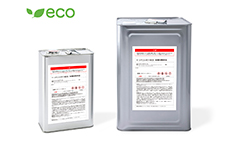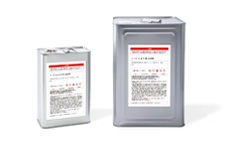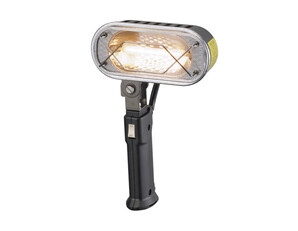- FE News»
- PPS News»
- Jun. 23, 2025
- Notice of Specification Change for ECHELON Zen-Xero Series Maintenance Bags
- Oct. 31, 2024
- [News Release R-1020] Release of "ECHELON Zen-Xero DYNAMIX”
- May. 15, 2024
- [News Release R-1019] Release of "ECHELON Ver.3.0”
- Oct. 02, 2023
- [News Release R-1018]Compound that achieves a genuine finish Full Renewal of “KATANA” Series
- Jun. 27, 2023
- [News Release] A final finishing compound that achieves a beautiful wet gloss. "KATANA DARK-SHOT" is Released.
Degreasers
Degreasers
What is degreasing?
As its name implies, degreasing is the removal of oils and fats from a given surface. It is an essential part of the automotive paint process, since oils and fats can repel a coating as it is applied. Degreasing is generally considered necessary in car detailing as well, but some aspects of the process are uncertain and vague. Degreasing is mainly required when applying coatings, but depending on the coating its importance can vary.
Traditionally, wax and organic compound coatings contained oil and fat ingredients themselves. As a result, even if degreasing was neglected before application, there was hardly a detectable difference in the end product. Today, however, mainstream glass coatings such as ECHELON do not themselves contain any oil or fat ingredients. Any oil or fat residues on a surface to be coated will affect the adhesion of the coating, and therefore degreasing is a more important part of the process.

The Degreasing Process
Although degreasing is a broad term, there are in fact many different ways of doing it. Let us look at some different types of degreasing and their advantages.
Silicon-off Types
This is the most well known method of degreasing. Our company offers many products in our Silicon-off NEO Series lineup. Silicon-off is a petroleum solvent with a mechanism for dissolving and removing oil from a painted surface. Strictly speaking, using Silicon-off on a dry painted surface to wipe away oil does not remove the dissolved oil but simply moves it. Also, there is a phenomenon of the painted surface turning white which can sometimes be seen when degreasing with SIlicon-off. This is caused by a residue of petroleum distillates contained in polishing compounds reacting with the ingredients of the SIlicon-off.
Alcohol Types
Alcohol-based solvents are also used in degreasing, but when it comes to pure dissolving power, this type is inferior to petroleum solvents such as Silicon-off. Because it can mix with water, however, there is less risk of streaky or uneven wiping, making it suitable for light degreasing. One caveat is that many glass coatings can be diluted or dissolved by alcohol, so when using an alcohol degreaser, please be sure to wipe off any excess and leave no residue behind.
Detergent Type
Degreasing with detergent is a completely different process from degreasing with a solvent. It is often thought to be too much trouble because it requires washing the vehicle again after polishing, but in fact this method has the most merit of all. Although this is unrelated to degreasing, washing after polishing allows you to completely wash away all polishing powder with certainty. For example, polishing powder which gets into small spaces is difficult to remove with wiping alone and can affect the final finish (except for polishing which does not require washing and degreasing with full masking). Also, degreasing can be done with confidence since the surfactants cause the oils to float and allow them to be rinsed off completely. Furthermore, hot water can be used to rapidly increase the degreasing power. This can be compared to how hot water cleans laundry better than cold.


About the Silicon-off NEO Series
The Silicon-off NEO Series is a multi-purpose degreaser developed by Dan Chemical at our request
Silicone Off ECO (Non-regulated under the Organic Solvent Ordinance)

This product features a unique formula different from conventional silicone removers and is not subject to organic regulations, ensuring safe use. It offers excellent quick-drying properties, allowing for efficient degreasing. Additionally, it minimizes clouding that often occurs during degreasing and reduces the number of wipes needed, lowering the risk of scratches.

It provides excellent degreasing performance without leaving cloudiness after drying, ensuring a smooth finish (without a squeaky feel). Unlike typical fast-drying types, it has no resistance during use and is safe for delicate colors.
Silicon-off NEO S.E ANTISTATIC

This type has moderate volatility and a balanced formulation which takes into consideration its effect on the painted surface. It has been rebooted with an added antistatic property. (Formerly: Silicon-off NEO SUPER EXPRESS/Silicon-off NEO)

This type of Silicon-off is the slowest drying and is the strongest solvent in the series. When used on a painted surface, it may cause the paint to peel, so use with caution.

This type has excellent volatility and medium solvent strength. It is suitable for jobs which require a fairly strong solvent.
Silicon-off NEO Antistatic type

This type has less electrification than previous Silicon-offs and reduces static electricity. When used to degrease a surface before applying a coating, the reduced electrification prevents dust particles from adhering, thereby yielding a coating with fewer blemishes. Also, when applying a coating, it reduces residual impurities and prevents contamination.
| Number of results:10 | 1 - 10 |
|---|
| Number of results:10 | 1 - 10 |
|---|












































































